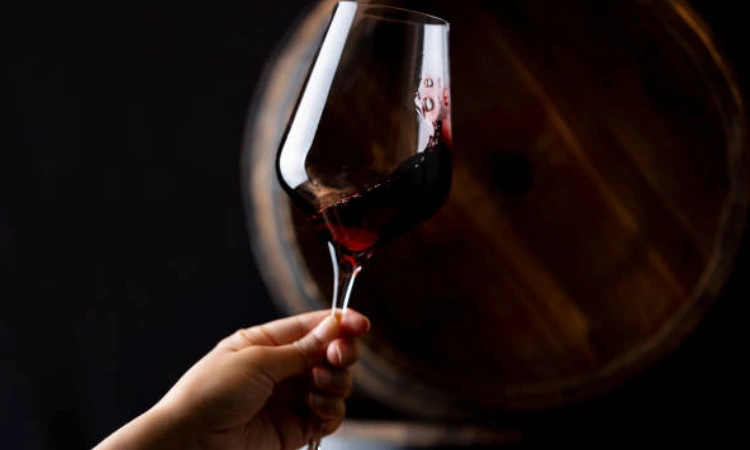Tasting wine like a sommelier doesn’t have to be complicated. In just 5 minutes, you can learn the essential steps to assess a wine’s appearance, aroma, flavor, and finish with confidence.
Whether you’re a beginner or just curious about wine tasting, this guide breaks it down into easy steps.
From swirling to savoring, we’ll help you unlock the flavors and characteristics that sommeliers experience, making wine tasting fun and accessible for everyone.
Ready to impress your friends with your wine knowledge? Let’s dive in to learn; how to taste wine like a sommelier?
What Does a Sommelier Actually Do?
A sommelier is a wine expert who specializes in wine and food pairing, wine storage, and managing wine lists in restaurants. They are skilled in wine tasting, assessing a wine’s flavor profile, and understanding its history and origins.

Sommeliers have extensive knowledge of vineyards, grape varieties, and wine regions, which helps them guide customers in choosing the perfect wine for their meal.
Their expertise elevates the dining experience, ensuring each wine complements the food, creating a harmonious balance of flavors. Essentially, a sommelier is a wine guide, offering expert advice for every occasion.
Why Proper Wine Tasting Matters (Even for Casual Drinkers) ?
Proper wine tasting enhances the overall wine tasting experience, even for casual drinkers. Understanding the wine tasting process allows you to fully appreciate the flavors, aromas, and textures of the wine.

No matter if you’re enjoying a glass with dinner or at a gathering, tasting wine with intention helps you identify subtle notes, improving your enjoyment. It’s not just about drinking—it’s about experiencing wine at its fullest, turning an ordinary sip into a moment of discovery.
Step-by-Step Breakdown of the Wine Tasting Process:
Understanding each of the wine tasting steps helps you appreciate wine fully & with intention.

Look: Judging the Color and Clarity
Examine the wine’s color and clarity to understand its age, quality, and potential flavors. A clear, vibrant wine may indicate youth, while deeper colors could hint at richness or maturity.
Swirl: Releasing the Aromas
Gently swirl the wine in the glass to release its aromas, which provide valuable insights into its complexity and character. This step lets you fully experience the wine’s bouquet.
Smell: Identifying Wine Aromas
Take a deep inhale to identify primary, secondary, and tertiary aromas. The scents can reveal the wine’s variety, region, and aging process, from fruity to earthy notes.
Sip: Tasting Notes, Texture, Balance
Take a small sip to assess the flavor, texture, and balance of the wine. Notice its sweetness, acidity, tannins, and body—important elements that create a harmonious taste.
Savor: Evaluating Finish and Structure
The finish refers to the lingering taste after swallowing. A long, smooth finish is often a sign of high-quality wine, while a short, abrupt finish may indicate a simpler wine.
Related: Proven Tips for the Perfect France Wine Tour in 2025
How to Develop a Tasting Palate Over Time?
Developing a wine tasting palate takes time and practice.
Start by tasting wines regularly and focusing on their individual components—aroma, taste, and finish. Keep a wine journal to track your preferences and sensations.
With each sip, your palate will become more attuned to the subtle nuances, allowing you to identify complex flavors and improve your overall wine experience.
Patience and consistency are key!
Understanding Wine Tasting Notes and Descriptors:
Understanding wine tasting notes and descriptors involves recognizing the unique flavors and aromas of a wine. Terms like “oaky,” “fruity,” or “tannic” help describe a wine’s characteristics.
These notes guide you through the complexity of the wine, helping you articulate its texture, acidity, sweetness, and finish.

Familiarizing yourself with these wine tasting terminologies enhances your ability to assess and enjoy wine.
Tools That Help You Taste Wine Like a Pro:
To taste wine like a pro, having the right tools is essential.
- Using the correct wine tasting glasses enhances your ability to assess aroma and flavor.
- An aroma wheel helps identify complex scents, improving your wine tasting experience.
- Additionally, a wine tasting journal allows you to track your preferences.
- Also, palate cleansers like water or plain crackers reset your senses between tastings, ensuring a more accurate evaluation.
These tools elevate your wine tasting skills to the next level.
Wine Tasting Etiquette – What Not to Do:
- Don’t rush: Take your time to savor each wine.
- Avoid over-sniffing: One or two gentle inhales are enough to assess the aroma.
- Don’t fill your glass too full: Leave space to swirl and release aromas.
- Never drink too much: Keep tasting small amounts, not full pours.
- Don’t dominate the conversation: Allow everyone to share their thoughts on the wine.
Tips for Hosting a Wine Tasting at Home:
- Plan a theme: Choose a theme like region, grape variety, or vintage to guide the tasting.
- Create a tasting checklist: Include wine types, tasting order, and key descriptors.
- Prepare snacks: Serve light, non-intrusive food like cheese, crackers, or olives to cleanse the palate.
- Use the right glasses: Ensure glasses are clean and appropriate for each wine.
- Encourage conversation: Let guests discuss flavors and impressions to enhance the experience.
Last Words: How to Taste Wine Like a Sommelier?
Anyone can taste wine like a sommelier with a little practice and the right knowledge.
By focusing on the wine’s appearance, aroma, flavor, and finish, you can elevate your tasting experience.
With time and attention, wine tasting becomes more than just a hobby—it’s a fun and rewarding skill to develop!
Related: Gordon Ramsay Red Wine Jus For Steak You Can Nail at Home
How do sommeliers taste wine?
Sommeliers taste wine by evaluating its appearance, aroma, taste, and finish. They carefully assess the wine’s clarity, swirl to release aromas, and analyze the flavor balance to make informed recommendations.
How to taste wine like a sommelier for beginners?
Start by examining the wine’s color, swirling it gently to release aromas, and inhaling deeply. Sip slowly, noting its taste, texture, and finish. Practice regularly to refine your palate and confidence.
What are the 5 S’s of wine tasting?
The 5 S’s are: See (color), Swirl (aerate), Smell (identify aromas), Sip (taste and assess balance), and Savor (evaluate finish). These steps help structure and enhance the tasting experience.
How do you taste wine like an expert?
Taste wine like an expert by focusing on its appearance, swirling to release aromas, and analyzing the flavors. Take time to assess texture, balance, and the wine’s lasting finish for deeper insights.
What are the 4 steps to wine tasting?
The four steps to wine tasting are: Look (observe the wine), Smell (inhale its aroma), Sip (taste and assess balance), and Savor (reflect on the wine’s finish and aftertaste). These steps guide you through the process.

